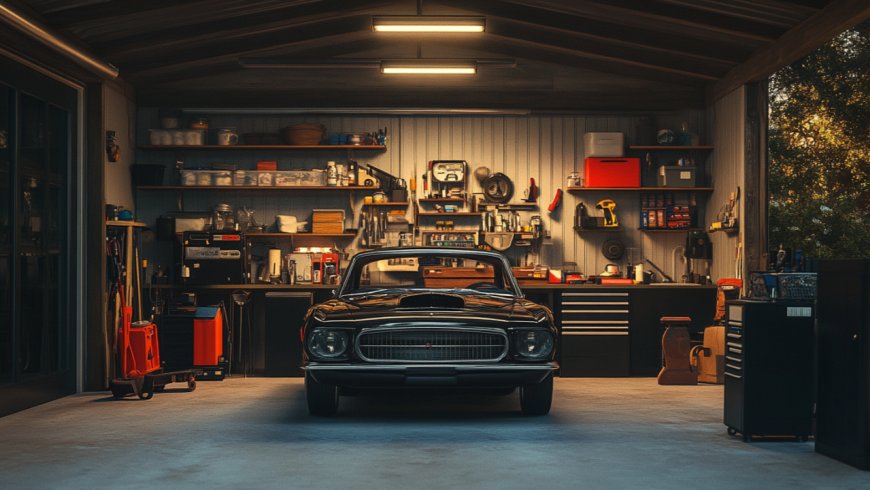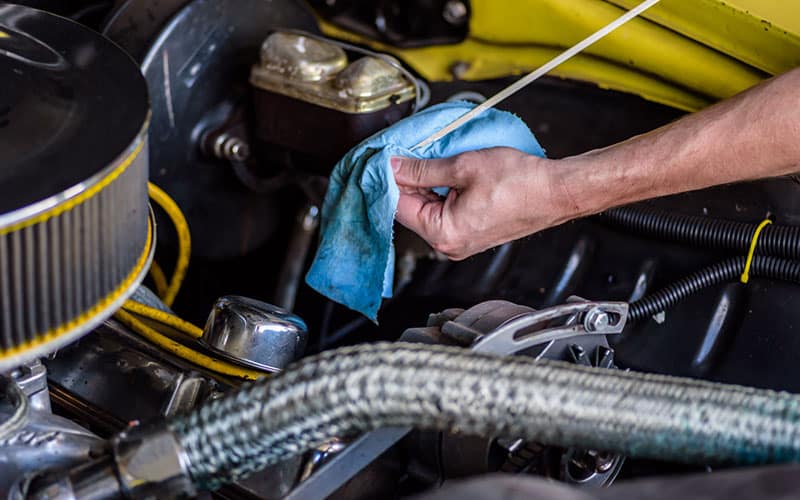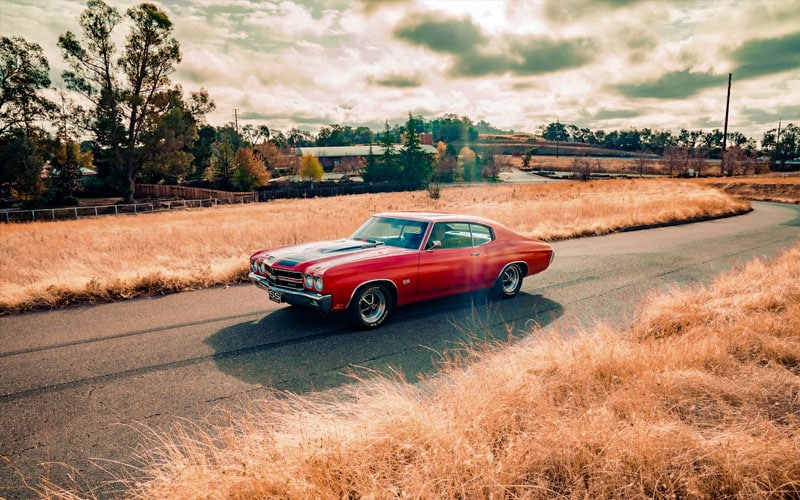From Tune-Ups to Treasures: Car Maintenance Tips and Must-See Classic Car Auctions.
we provide essential car maintenance tips to help keep your vehicle running smoothly, whether you're driving a daily commuter or a prized classic. We’ll cover basic maintenance tasks, from tire care to fluid checks, ensuring your car stays in top condition for years to come. Additionally, we dive into the exciting world of classic car auctions, sharing insights into how to find rare, well-maintained models and what to consider before bidding. Whether you're a car enthusiast looking to expand your collection or simply aiming to keep your current car in peak condition, this guide has you covered!

Classic Car Auctions - Top 10 Tips
Thinking about diving into the exciting world of classic car auctions or keeping your vintage ride running like a dream? Whether you're a seasoned collector or just starting your journey, a little knowledge can go a long way. In this guide, we’ll walk you through top tips for smart bidding at auctions and essential maintenance advice to keep your classic car in peak condition. Let’s get started!
Classic car auctions used to be the domain of professional motor traders looking to make a few quid or shift a lemon. But in recent times, there's been a big-time revival! Thanks to reality TV shows like Bangers & Cash, Ant Anstead'sBorn Mechanic, Richard Hammond’s Workshop, and Chasing Classic Cars with Wayne Carini, everyone’s getting a peek behind the curtain at how classic car auctions really work. You’ll see the canny ones making a tidy profit flipping motors, and let’s be honest, who doesn’t want a slice of that pie?
For us car enthusiasts, walking into a classic car auction feels like being a kid in a sweet shop. Beautiful, luxury cars left, right, and centre—makes and models galore, some polished to perfection, others a bit rough around the edges, ready for a second chance at life. What’s not to love?

1. Online vs. In-Person Auctions
Online platform such as Car & Classic, Collecting Cars, Piston Heads, and even eBay make bidding easy for the average shopper but it's the bricks-and-mortar auction houses which is where the real magic happens They’ve still got that live atmosphere, but now many are on the internet with live streaming and online bidding, so you can still get involved from the comfort of your own couch. Some of the big names in the UK worth a visit are Anglia Car Auctions, Bonhams, and Silverstone Classics. There's nothing like the thrill of being there in person, waving your paddle at the auctioneer and scooping a great deal.
2. Condition Reports & Inspection
Some auction houses offer condition reports, an official assessment of the car’s condition. If you're serious about buying a beautiful car, think about giving the auctioneer a ring beforehand and asking for a report. They can save you a lot of heartache. Be cautious, online photos can be deceiving! It's best to get yourself down to the auction and have a proper look at the car. Bodywork’s always the trickiest, costliest bit, so you want to make sure you're not biting off more than you can chew.
 It pays to view in person, check out this tin worm not seen in the online listing
It pays to view in person, check out this tin worm not seen in the online listing
3. Auction Fees and Bidding Strategy
When you’re bidding at auction, the Buyer Premium’s always going to slap on a little extra on top of the hammer price. This can range from 7.5% to 12.5%, and if you’re bidding online or by phone, expect to pay a bit more. Make sure you’re doing your sums before you raise your paddle. Know your limits. Don’t get carried away in the heat of the moment. Do a bit of homework beforehand, check out current market values, look at online classifieds and read the mags.
4. Consider Spare Parts and Running Costs
Some cars are a dream when it comes to parts availability—like your MGs and Minis. They're a doddle. But if you’re looking at something rarer, it could be near impossible to find parts. If you’re looking at a classic that's a bit thin on the ground, you want a well-preserved example. Before you get striped up, search out an owners club, or Facebook group, and check out YouTube— It pays to spend a few hours searching on the web to uncover the common issues that you may not already know about.
.jpeg?Sequence=248825&Width=600&Height=800) With fantastic spares support this MGBGT Jubilee looked like winner!
With fantastic spares support this MGBGT Jubilee looked like winner!
5. Before Your Visit
Line-up a few cars that you like the look of and check the auction house website. Print off the details. Have a look at the lot numbers and make sure you know when they’re going up for auction. Some run over a couple of days, so you don’t want to miss your chance on that motor you've got your eye on. And, trust me, read the terms and conditions—if you raise that paddle and the hammer falls, you’ve bought it!
This is also the time to utilise your P.I skills, the first port of call is https://www.gov.uk/check-mot-history, where you can check the vehicles current MOT status reviewing any passes/fails, mileage and minor/major defects. If you’ve got your eye on a modern classic, you may also want to run an online car check (HPI Check, CarVertical, vCheck) this will help you to identify hidden crash repairs, insurance write-offs (change of categories) and salvage records. For older classics, it’s always worth asking around through clubs and enthusiast groups to see if more is known. Avoid buying a classic without first doing your homework.
Tips for Proper Classic Car Maintenance
Owning a collector car is a joy, a privilege, and a great way to meet new people – but it’s also a bit of a responsibility when it comes to classic car maintenance. Consider the following: every “barn find” candidate for restoration was once a completely functional automobile. There’s a reason classic car collectors joke about the phrase “running when parked.” If you want to avoid that particular fate, it’s best to get ahead of your maintenance and stay ahead of it! By doing so, you’ll ensure that your classic ride won’t let you down when it’s time to hit the road.
We put together eight tips for your classic car maintenance checklist to help keep your treasure in top shape and ready for its next adventure.

1. Keep Your Eye on Fluids – Watch Their Levels and Condition
Do you check your oil after your classic car has been sitting for a while? Of course you do! But you’ll want to do more than that. As a minimum for classic car maintenance, you should periodically “preflight” your classic by checking levels for oil, coolant (if that applies!), brake fluid, power steering fluid, (again, if you have it) transmission fluid, and differential fluid. Got a Citroen? Then you’ll need to check the hydraulics as well – but remember, “blinker fluid” is just a joke we tell each other.
It’s never a bad idea to leave plain white office paper under known leak spots so you can get a quick idea of what’s leaked out – but remember that some fluids also evaporate, while others can migrate elsewhere in the car, away from where they are needed.

2. Keep Your Classic Car Clean and Dry
Can you harm your classic just by letting it get dirty? You’d be surprised. On the exterior, dust and dirt buildup can hide the appearance and development of rust and corrosion – or even aid the process. Under the hood and in the running gear, excessive dirt can act as an insulator, raising the temperature of critical fluids or components. It can also contaminate your fluids when you check or change them. So while you don’t need to keep most cars in 100-point concours condition all the time, you shouldn’t let them get dirty enough for onlookers to inquire after “the original color.”
3. Properly Store with Care
The easiest way to keep your classic clean and dry? Indoor storage on a hard floor with the appropriate car cover. Why a hard floor? Because condensation tends to rise off the ground on gravel or dirt floors, increasing underbody and frame corrosion. We also gave some great storage tips so don’t be afraid to use them.
4. Original Parts – Stay on Top of Your Perishables
Many older classics, particularly prewar and classic British cars, have perishable wear components. The Ford Model T, as an example, originally used “Scandinavian” cotton drum liners for the transmission. Today, many owners exchange that for Kevlar – but if you’re keeping it original, then you’re going to be responsible for the condition and lifespan of those perishable bands. There’s a surprising amount of leather, wood, cotton, and canvas in older cars. Make sure you know where it is, what it does, and how to check its condition.
Think you’re out of danger because you drive a “young-timer” or newer classic? That might not be the case. Not only is there still a lot of rubber in newer cars, there’s always a unique opportunity for trouble. For example, some W140-generation Mercedes S-Class cars featured a biodegradable wiring harness to help the environment after the car was junked. Turns out they bio-degrade just a little faster than everyone thought!

5. Rust Never Sleeps
Want your classic car to last a long time? Figure out where it’s going to rust and stay ahead of corrosion. Pickups tend to rust at the “cab corners” and where the bed has been used heavily. Newer vehicles with windshield replacements can accumulate corrosion under the new adhesive. Hondas and British cars can rust everywhere. Get your flashlight out and take a look under the hood, under the car, where the body meets the frame, or even where the suspension components meet a unibody. Get to know the difference between rust on a component part (which can be addressed any time you need to) and rust on the body attachments (which is a Code Red situation).
Cleaning the underbody of your car after a long drive can go a long way towards preventing corrosion, but it’s impossible to get away from the fact that rust is a natural process for uncoated and lightly coated steel. Anywhere you have that, you’ll eventually have some rust.
What’s the best way to address what you find? It could be anything from a quick spray of paint-over-rust protectant to a rotisserie restoration. Talk to the marque experts to get advice for your particular car.
6. Keeping the “Moving Parts” Moving
It’s a question often asked by classic car owners: How often do I need to grease the chassis and suspension? Well, nobody ever did it too much, that’s for sure. Get to know the lubrication schedule for your particular car – there can be a dozen or more grease fittings on an older chassis. Once you’ve done that, get up top and look at things like seat tracks, adjustable steering wheels, window rollers, and other things that only move sometimes. This goes double or triple for any feature that was considered “new and innovative” at the time, like the swing-away steering wheels or seats of the Sixties.

7. Tires Get Tired
It’s an unfortunate fact of life that tires don’t last forever – even if you never use them. Temperature fluctuations, ultraviolet light from common sources like the sun, and ozone in the atmosphere can all combine to harden and crack the rubber surfaces of your tires. The steel or nylon belts beneath that rubber can also lose flexibility or strength during storage.
How often should you replace tires? For classic car maintenance it’s a common industry recommendation to replace six years after the date of manufacture. That’s the safest practice. If you want to extend the life of your tires beyond that, you will need to become very good at evaluating the condition of the rubber. Want to be double-sure? Ask a racer friend for a tire hardness tester and learn how to use it.

8. Don’t Let It Sit Long – Get Out and Drive!
The best thing you can do to keep your classic car healthy: drive it once in a while. This will circulate fluids, put various components through their ranges of motion, and realign all the moving parts. Not driving a car is the single harshest thing you can do to it. Consider this an excuse to get your car out of the garage and on the road, where you can enjoy it a bit. It’s the responsible thing to do – and it will remind you why you’re going through all this trouble in the first place!
Conclusion:
Buying and maintaining a classic car isn’t just a hobby — it’s a passion, a lifestyle, and a connection to a rich automotive history. Whether you're bidding on your dream machine or preserving a cherished favorite, the right preparation and care make all the difference. Stay informed, stay attentive, and most importantly, get out there and enjoy the open road. After all, classic cars are built to be driven and admired — not hidden away!
What's Your Reaction?
 Like
0
Like
0
 Dislike
0
Dislike
0
 Love
0
Love
0
 Funny
0
Funny
0
 Angry
0
Angry
0
 Sad
0
Sad
0
 Wow
0
Wow
0



























